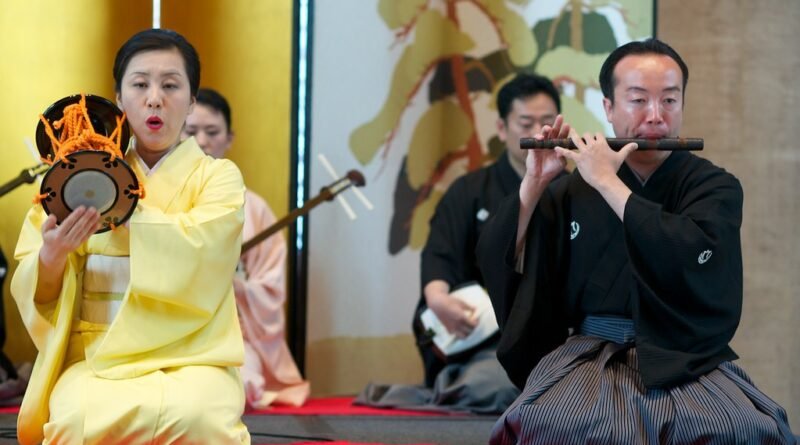Introduction to Nambu Shimigakure Music
Nambu Shimigakure Music is a mesmerizing and historically rich form of traditional Japanese music, deeply rooted in the cultural and artistic expressions of Japan. This music is a unique blend of historical influences, spiritual depth, and regional traditions, making it a significant part of Japan’s folk music heritage.
From its origins to its modern-day interpretations, Nambu Shimigakure Music continues to be a vital element of Japanese musical identity. It is celebrated for its distinctive sound, which combines ancient instruments, poetic storytelling, and rhythmic patterns that captivate both the mind and the soul.
Origins and History of Nambu Shimigakure Music
The origins of Nambu Shimigakure Music date back to centuries ago, where it emerged from the northern regions of Japan. This traditional style was influenced by various cultural exchanges, Buddhist chanting traditions, and indigenous musical forms. It was often performed during religious ceremonies, cultural festivals, and local celebrations, symbolizing a deep connection between music and spirituality.
Over time, Nambu Shimigakure Music evolved, incorporating different elements from various musical styles. The melodies, rhythms, and lyrical compositions have been passed down through generations, preserving its authenticity and historical significance.
The Unique Sound of Nambu Shimigakure Music
One of the most defining aspects of Nambu Shimigakure Music is its distinctive sound. It features a combination of slow, meditative melodies and vibrant, rhythmic patterns. The tonal quality is deeply emotional, often evoking a sense of nostalgia, peace, and introspection.
The sound is heavily influenced by traditional Japanese scales, which differ significantly from Western musical scales. These scales contribute to the hauntingly beautiful melodies that make Nambu Shimigakure Music unique and instantly recognizable.
Instruments Used in Nambu Shimigakure Music
The instrumental composition of Nambu Shimigakure Music is a key element of its identity. Traditional Japanese instruments, each with its own unique tonal characteristics, are used to create the signature sound. Some of the primary instruments include:
- Shamisen: A three-stringed instrument played with a plectrum, producing deep and expressive sounds.
- Koto: A 13-stringed zither-like instrument, adding rich harmonies to the music.
- Shakuhachi: A bamboo flute known for its breathy and soulful tone.
- Taiko Drums: Providing the rhythmic backbone of many performances.
- Biwa: A lute-like instrument that enhances the melodic storytelling aspect.
Each of these instruments plays a crucial role in shaping the identity of Nambu Shimigakure Music, blending together to create an immersive auditory experience.
Cultural and Spiritual Significance
Music has always played a vital role in Japanese culture, often serving as a bridge between the spiritual and physical worlds. Nambu Shimigakure Music, in particular, has deep connections with Buddhist chants, Shinto rituals, and local folklore.
It has been used in religious ceremonies, tea ceremonies, and traditional theater performances. The melodies are believed to invoke divine blessings and foster a connection between the performers, the audience, and nature.
Evolution and Modern Adaptations
While Nambu Shimigakure Music has its roots in ancient traditions, it has not remained static. Over the years, contemporary artists have experimented with blending traditional sounds with modern musical elements. This fusion has led to innovative interpretations that appeal to both traditionalists and modern music enthusiasts.
Some contemporary musicians incorporate electronic elements, Western instruments, and even jazz influences, creating a fresh yet respectful take on this historic genre. The evolution of Nambu Shimigakure Music showcases its adaptability and enduring relevance in today’s musical landscape.
Nambu Shimigakure Music in Contemporary Japanese Society
Despite the rapid modernization of Japan, traditional music still holds a special place in society. Nambu Shimigakure Music is often performed at cultural festivals, national events, and educational programs aimed at preserving Japan’s musical heritage.
There has been a resurgence of interest among younger generations who seek to reconnect with their cultural roots. Various initiatives, including music schools, cultural organizations, and government programs, have been established to keep this art form alive.
Famous Performers and Influential Figures
Several musicians and scholars have contributed to the preservation and promotion of Nambu Shimigakure Music. Some of the most notable figures include:
- Traditional Masters: These musicians have dedicated their lives to mastering and teaching the art of Nambu Shimigakure Music.
- Cultural Historians: Scholars who document and research the history and evolution of this musical tradition.
- Modern Fusion Artists: Musicians who blend traditional elements with contemporary styles, bringing the genre to a global audience.
These individuals play a crucial role in ensuring that Nambu Shimigakure Music continues to thrive for future generations.
Challenges in Preserving Nambu Shimigakure Music
Like many traditional art forms, Nambu Shimigakure Music faces challenges in the modern world. Some of the main obstacles include:
- Declining Interest Among Youth: Many young people are drawn to contemporary music, leading to a decrease in new practitioners.
- Lack of Institutional Support: While some initiatives exist, more funding and support are needed to sustain preservation efforts.
- Globalization and Cultural Shifts: The influence of Western music and modern lifestyles has led to a decline in traditional music appreciation.
Despite these challenges, efforts are being made to revive interest and keep Nambu Shimigakure Music alive through education, performances, and international collaborations.
The Future of Nambu Shimigakure Music
Looking ahead, the future of Nambu Shimigakure Music remains promising. With increased global interest in world music and traditional arts, there is potential for renewed appreciation and recognition.
Through digital platforms, live performances, and cross-cultural collaborations, this unique musical tradition has the opportunity to reach new audiences and inspire future generations of musicians.
Conclusion
Nambu Shimigakure Music is more than just a traditional art form—it is a living testament to Japan’s rich cultural history and artistic expression. With its deep spiritual significance, unique sound, and evolving nature, it continues to captivate listeners across generations.
As efforts to preserve and innovate this music continue, Nambu Shimigakure Music will undoubtedly remain a cherished and influential part of Japan’s musical heritage for years to come.




